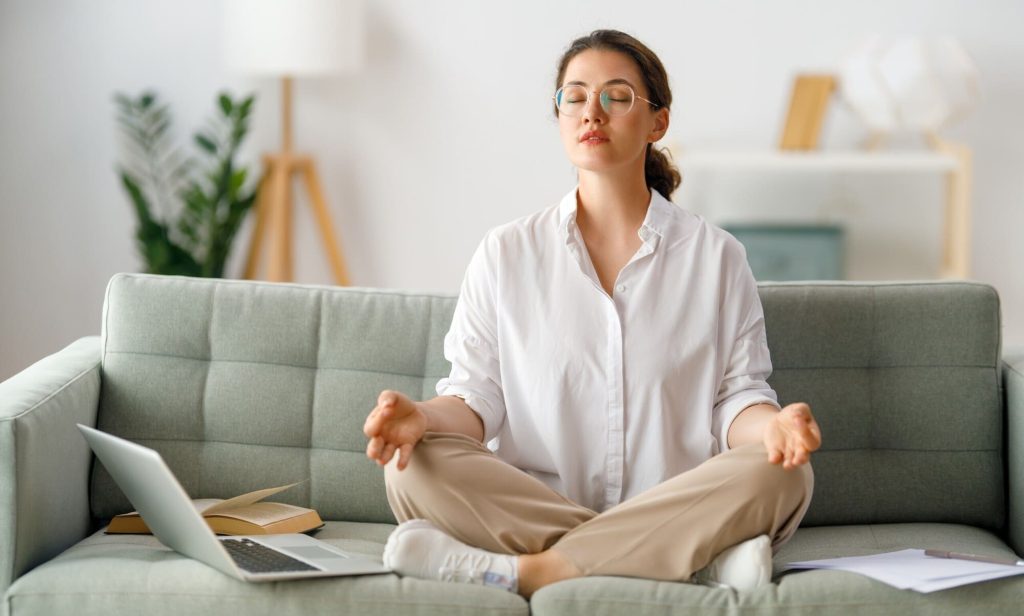Breathing Techniques during Bath Meditation to Deepen Relaxation

A Journey to Tranquility Through Bath Meditation
Bath meditation offers a unique pathway to tranquility, integrating the soothing properties of water with mindful introspection. This practice creates a serene environment, where the gentle warmth of the bathwater envelops you, helping to wash away stress and fatigue. By focusing on the present and tapping into your breath, you can elevate a simple act of bathing into a rich meditative practice that paves the way for deep relaxation and mental clarity.
The right breathing techniques during your bath can significantly enhance this experience. When you consciously regulate your breath, you not only ease tension in the body and mind but also ground yourself in the moment. Some notable benefits of targeted breathing practices include:
- Ease tension in the body and mind, allowing for a full release of stress accumulated throughout the day.
- Enhance concentration on the present moment, fostering an atmosphere where distractions are minimized.
- Boost emotional well-being through mindfulness, transforming your perspective and promoting feelings of peace.
In bustling environments like Nigeria, where urban life is often characterized by rapid pace and constant stimuli, adopting these simple yet effective breathing techniques becomes essential. Practices such as deep abdominal breathing, where you inhale deeply through your nose and feel your stomach expand, can quickly ground you. Another effective method is 4-7-8 breathing, which involves inhaling for four seconds, holding for seven seconds, and exhaling for eight seconds, creating a calming rhythm that effectively alleviates anxiety.
Transforming Your Bathing Ritual
Incorporating these breathing methods into your bathing routine can transform an ordinary experience into a profound journey of self-discovery. Whether you are unwinding in the comfort of your own home or seeking solitude in a serene retreat, these techniques provide the tools to create a sanctuary for your mind and body. Imagine stepping into a tranquil bath infused with herbs like lavender, known for its calming properties, while your gentle breaths align with the warm embrace of the water. This combination can create an extraordinary oasis, one where you can reflect and recharge.
Ultimately, are you ready to explore the art of breath while you soak? With a few intentional practices, your bath can evolve into a powerful meditation session, offering the respite needed to navigate daily challenges. Keep reading to uncover methods that can elevate your bath meditation to new heights and inspire a transformative approach to relaxation.

LEARN MORE: This related article may interest you
Breathing Techniques for Enhanced Relaxation
Embracing the practice of bath meditation not only requires a tranquil environment but also a mindful approach to breathing. Breathing techniques serve as the backbone of meditation, allowing individuals to enter a deeper state of relaxation and mindfulness. Understanding how to harness the breath is essential for transforming your bath into a refuge from the overwhelming pace of modern life, especially in fast-paced environments like Nigeria.
One of the most effective techniques to consider is deep abdominal breathing, commonly referred to as diaphragmatic breathing. This method encourages you to take slow, intentional breaths that engage the abdomen rather than the chest. To practice this technique, find a comfortable position in your bath. Close your eyes and take a moment to notice the flow of air through your nostrils. As you inhale deeply through your nose, allow your stomach to rise fully, expanding your diaphragm. Then, exhale slowly through your mouth, feeling your abdomen contract. Repeat this cycle for several minutes. This focused breathing not only promotes physical relaxation but also fosters emotional stability, helping you to let go of daily stressors.
Another beneficial method is the 4-7-8 breathing technique, which is particularly effective in inducing calmness. As you settle into your bath, begin by inhaling through your nose for a count of four, allowing the breath to fill your lungs completely. Hold this breath for a count of seven, creating a moment of stillness before releasing the air through your mouth for eight counts. This structured breathing pattern encourages a slow heart rate and provides a sense of calming rhythm, reducing anxiety while nurturing a peaceful state of mind.
Incorporating breathing techniques into your bath meditation can provide a host of additional benefits that deserve your attention:
- Stress reduction: By focusing on your breath, you can effectively reduce cortisol levels, the hormone linked to stress.
- Enhanced emotional regulation: Mindful breathing allows you to confront and understand your emotions better, facilitating a healthier response to stress and anxiety.
- Physical health improvement: Deep, regulated breathing can enhance oxygen flow throughout the body, promoting circulation and improving overall well-being.
As you explore the benefits of these practices, remember that the essence of bath meditation lies in its adaptability. Whether you are enjoying a warm bath infused with calming scents typical of local Nigerian herbs or soaking in a quiet space, the conscious act of breathing will guide you toward deeper relaxation. This invaluable practice becomes a tool for navigating the chaos of everyday life, offering a sanctuary where you can reconnect with yourself.
Are you ready to harness these breathing techniques to deepen your meditation experience? Pay attention to the way your breath interacts with the soothing water around you, and prepare to embark on a transformative journey toward relaxation and self-discovery.
| Advantages | Details |
|---|---|
| Enhanced Mindfulness | Incorporating controlled breathing techniques during bath meditation promotes a deeper level of mindfulness, allowing you to connect with your body and mind. |
| Stress Reduction | Utilizing these techniques can significantly lower stress levels, as focused breathing initiates the relaxation response in your body, calming the mind and alleviating pressure. |
Breathing techniques during bath meditation serve as a gateway to profound relaxation and inner peace. The consistent rhythm of deep breaths during this sensory experience helps to quiet the mind, enabling you to let go of daily anxieties and distractions. Understanding the science behind these techniques can enhance your practice. For instance, the 4-7-8 technique is a simple yet effective method where you inhale for four seconds, hold for seven, and exhale for eight. This pattern not only calms the nervous system but also engages the diaphragm, which is essential for deep respiratory practices.Moreover, warm bathing combined with structured breathing can elevate your meditation practice. The warmth soothes the muscles while the careful attention to breath further promotes an intoxicating sense of tranquility. By embracing these methods, you are not only enhancing bath meditation but also contributing to a holistic approach to mental wellness. As you delve deeper into this practice, you might find additional benefits such as improved sleep quality and increased emotional resilience, thereby enriching your overall quality of life.
YOU MAY ALSO LIKE: Read read another article
Integrating Mindful Breathing into Your Bath Routine
Expanding on the previous techniques, it’s essential to consider how mindful breathing can be seamlessly integrated into your bath routine for a holistic relaxation experience. Bath meditation is not just about soaking in water; it involves engaging your senses and connecting with your inner self. Thus, the incorporation of dedicated breathing practices not only enhances your bath time but also provides a foundation for ongoing emotional and mental well-being.
One powerful practice to explore is the alternate nostril breathing, known as Nadi Shodhana in yogic traditions. This technique is perfect for restoring balance and calming the mind, particularly amidst the hustle and bustle commonly experienced in Nigerian cities. To practice alternate nostril breathing, sit comfortably in your bath and take a few deep breaths to center your focus. Using your right thumb, gently close your right nostril and inhale deeply through your left nostril for a count of four. Once your lungs are full, close your left nostril with your ring finger and release the breath through the right nostril for a count of four. After exhaling, inhale back through the right nostril, then switch and exhale through the left. Continue this cycle for five to ten minutes. This rejuvenating technique is known to harmonize the body’s energy channels, leaving you with a profound sense of peace.
Furthermore, box breathing is another effective technique that can be implemented during bath meditation. This practice is particularly useful for individuals seeking to cultivate greater presence and composure. To practice box breathing, visualize a square. Inhale for a count of four, hold for four, exhale for four, and then hold for another four. Engaging fully in this rhythmic cycle can help ground your thoughts and emotions. As you follow the pattern, think about the water surrounding you: feel its warmth embrace you as you breathe in serenity, hold onto the release of stress, and then exhale all worries into the water. This process not only calms the mind but also enhances your ability to focus on the present moment.
Moreover, tapping into nature’s tranquility can deeply enhance your meditation experience. As you engage in these breathing techniques, consider surrounding yourself with elements that resonate with your cultural roots. This could include lighting local incense or deploying soothing sounds of traditional African drumming or nature sounds echoing from your environment. These elements can create a multi-sensory experience that complements your breathwork, allowing you to transcend the everyday and connect with your deeper self.
- Essence of Self-Discovery: Each session of bath meditation becomes an opportunity to explore your thoughts and feelings without judgment, as mindful breathing helps facilitate this journey.
- Maintenance of Posture: While enjoying your bath, remember that the alignment of your body plays a critical role in effective breathing. Adjust your position for optimal breath flow, allowing your body to fully relax into the water.
- Cultural Relevance: Incorporating traditional breathing techniques from Nigerian wellness practices can also help enhance the authenticity of your bath meditation experience, making it more relatable and meaningful.
By understanding and implementing these varied and enriching breathing techniques, you can create a tailored bath meditation that not only fosters relaxation but also encourages emotional resilience and self-awareness. As you delve deeper into your practice, allow the combination of water, breath, and sensory experiences to form a cocoon of tranquility that nurtures both body and mind.
ADDITIONAL INSIGHTS: Expand your understanding here
Conclusion: Embracing the Tranquility of Breath in Bath Meditation
In conclusion, the integration of breathing techniques during bath meditation can significantly deepen relaxation and enhance your overall well-being. As we discover the profound impact of mindful breathing practices, it becomes clear that they not only elevate our bath experience but also nurture our emotional landscape. Techniques such as alternate nostril breathing and box breathing provide tools to restore balance, ground your thoughts, and promote a sense of tranquility amidst daily chaos.
Moreover, the incorporation of culturally relevant elements, like traditional Nigerian sounds or scents, enriches the immersive experience, offering a bridge to your heritage while fostering a deeper connection to self. As the warm water envelops you and your breath finds a natural rhythm, allow your mind to drift into a state of serenity. Each breath, each moment spent in meditation becomes an opportunity for self-discovery and renewal.
Ultimately, the essence of bath meditation lies in the harmonious interplay of water, breath, and sensation. By embracing these breathing techniques, you not only create a sanctuary of calmness but also empower yourself to cultivate emotional resilience and mindfulness in your daily life. So, the next time you indulge in a bath, remember to breathe mindfully and let the water wash over every worry, leading you toward a more peaceful existence.



